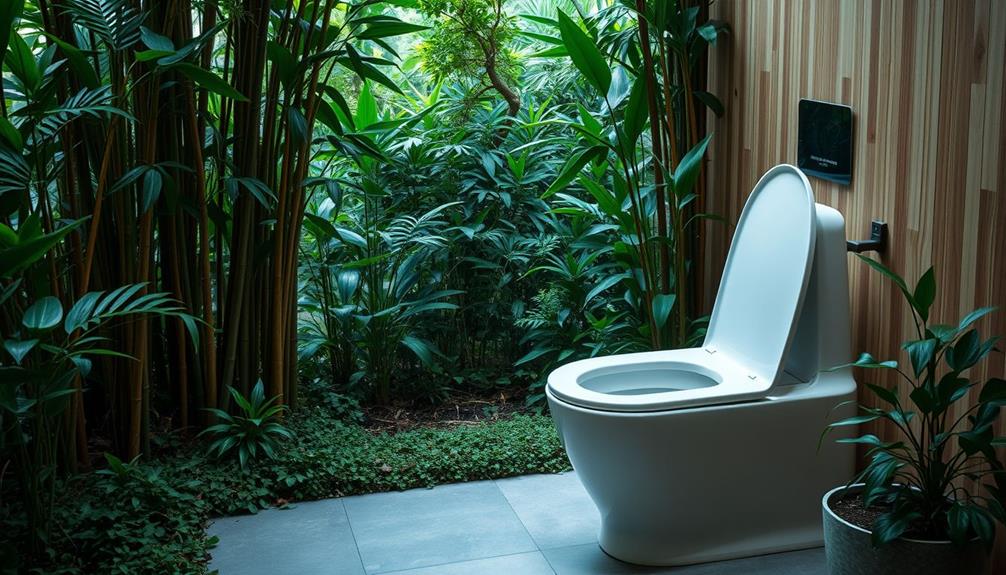As a seasoned plumber, I’ve seen my fair share of leaky toilets. It’s a frustrating problem that can lead to water damage and skyrocketing bills. But fear not, because in this article, I’ll show you how to stop a toilet from leaking.
From identifying the source of the leak to tightening the water supply line and replacing the wax ring, I’ll guide you through each step with practical and precise instructions.
So let’s dive in and put an end to that pesky leak!
Key Takeaways
- Check for water pooling around the base of the toilet
- Look for leaks from the tank
- Faulty wax ring or loose bolts may be the cause
- Cracked tank or faulty flapper valve could be the issue
Identifying the Source of the Leak
To stop a toilet from leaking, it’s important to first identify the source of the leak. Leaking toilets can cause water damage and waste precious resources. Thankfully, there are common signs that can help troubleshoot the issue.
The first step is to check if there is water pooling around the base of the toilet or leaking from the tank. If the base is wet, it could indicate a faulty wax ring or loose bolts. If the tank is leaking, it could be due to a cracked tank or a faulty flapper valve.
Checking and Tightening the Water Supply Line
You can quickly check and tighten the water supply line to prevent any further issues. Here’s what you need to do:
-
Inspect the water supply line: Check for any visible signs of water damage or leakage along the line. Look for wet spots, discoloration, or dampness on the floor or walls near the toilet. This could indicate a problem with the supply line.
-
Turn off the water: Locate the shut-off valve near the toilet and turn it clockwise to stop the water flow. This will prevent any water from leaking while you work on the supply line.
-
Tighten the connections: Use a wrench to carefully tighten the nuts on both ends of the water supply line. Make sure they are snug, but be careful not to overtighten and cause damage.
-
Check for leaks: Turn the water back on and observe the supply line for any leaks. If you notice any, repeat the tightening process or consider replacing the supply line altogether.
Replacing the Wax Ring
After turning off the water supply, I carefully remove the toilet to replace the wax ring. Replacing the wax ring is crucial in preventing future leaks and troubleshooting common issues with a leaking toilet.
The wax ring creates a watertight seal between the toilet base and the floor, ensuring that water doesn’t leak out. To replace the wax ring, I first scrape off the old wax residue from the toilet flange and the bottom of the toilet. Then, I place the new wax ring onto the flange and carefully lower the toilet onto it, making sure it is aligned properly. After securing the toilet bolts, I reconnect the water supply and turn it back on.
Now, let’s move on to fixing a cracked toilet tank or bowl, which can also lead to leaks if not addressed.
Fixing a Cracked Toilet Tank or Bowl
If a crack develops in your toilet tank or bowl, it is important to address it promptly to prevent further damage. Repairing cracks in a toilet can be a simple process if done correctly. Here are four steps to help you fix a cracked toilet tank or bowl:
-
Empty the tank or bowl: Turn off the water supply and flush the toilet to remove any water from the tank or bowl.
-
Clean and dry the area: Use a mild detergent and water to clean the cracked area. Ensure it is completely dry before proceeding with the repair.
-
Apply a sealant: Use a waterproof sealant specifically designed for repairing toilets. Apply it generously over the crack, making sure to cover the entire area.
-
Let it cure: Allow the sealant to dry and cure according to the manufacturer’s instructions. Once it is fully cured, turn the water supply back on and check for any leaks.
Adjusting or Replacing the Flush Valve
To adjust or replace the flush valve, start by turning off the water supply and flushing the toilet to empty the tank.
Flush valve maintenance is an essential part of keeping your toilet leak-free and functioning properly. If you notice any leaks or running water after flushing, it’s likely that your flush valve needs attention.
Troubleshooting flush valve leaks can be done by inspecting the rubber gasket or flapper. If it’s worn out or damaged, it’s time to replace it. Adjusting the flush valve can also help with leaks.
Make sure the flush valve is properly aligned and seated in the tank. If needed, adjust the chain length to ensure a proper seal.
Sealing and Caulking Around the Base of the Toilet
When it comes to sealing and caulking around the base of the toilet, there are some key points to keep in mind.
First and foremost, proper caulk application is crucial for a tight and waterproof seal. It’s important to avoid common caulk mistakes, such as applying too much or too little caulk, as this can lead to leaks and water damage.
Additionally, choosing the right caulk for the job is essential, as different types of caulk have different properties and are suitable for different applications.
Proper Caulk Application
Make sure you’re applying the caulk in a continuous line around the base of the toilet to properly seal any potential leaks.
To ensure a successful caulk application, follow these steps:
-
Choose the right caulk type: There are various caulk types available, such as silicone, acrylic, and latex. Consider the specific needs of your toilet and select the appropriate caulk for the job.
-
Prepare the surface: Clean the area around the base of the toilet thoroughly. Remove any old caulk using caulk removal techniques like using a caulk removal tool or a putty knife.
-
Apply the caulk: Load the caulk into a caulk gun and cut the tip at a 45-degree angle. Start at one end of the toilet base and apply a smooth, even line of caulk along the entire perimeter.
-
Smooth and finish: Use a caulk smoothing tool or a wet finger to smooth the caulk and create a neat finish.
Common Caulk Mistakes
In my experience, I’ve noticed that there are some common mistakes people make when applying caulk to stop a toilet from leaking. It’s important to be aware of these mistakes so that you can avoid them and ensure a proper seal.
Here are a few of the most common caulk application mistakes:
-
Applying too much caulk: This can result in an uneven and messy appearance, and it may also prevent the caulk from properly adhering to the surfaces.
-
Not using the right caulking tool: A caulking gun is the most efficient tool for applying caulk. It allows for better control and a more precise application.
-
Using the wrong caulk: It’s important to choose a caulk that is specifically designed for bathroom use and is waterproof.
Choosing the Right Caulk
To ensure a proper seal for your bathroom, it’s important to choose the right caulk specifically designed for waterproofing. There are several types of caulk available on the market, each with its own set of advantages and uses. Here are some factors to consider when selecting the right caulk for your bathroom:
-
Silicone Caulk: This type of caulk is highly flexible and resistant to water, making it perfect for sealing joints and gaps in wet areas like showers and tubs.
-
Acrylic Caulk: Acrylic caulk is easy to apply and paint over, making it suitable for sealing non-wet areas such as baseboards and trim.
-
Latex Caulk: Latex caulk is also easy to apply and can be cleaned up with water. It is best used for sealing gaps and cracks in non-wet areas.
-
Polyurethane Caulk: This caulk is extremely durable and flexible, making it ideal for sealing outdoor areas or where movement is expected.
When it comes to caulk removal, it’s important to use the right techniques and tools to avoid damaging the surface. A caulk removal tool or a utility knife can help you carefully remove the old caulk before applying a new one.
Conclusion
In conclusion, fixing a leaking toilet is a straightforward task that can save you from unnecessary water wastage and potential damage to your bathroom.
By following the steps outlined in this article, you can easily identify and address the source of the leak.
Did you know that a leaky toilet can waste around 200 gallons of water per day? That’s enough to fill a small swimming pool in just a week!
So take action and fix that leak to conserve water and save money.










